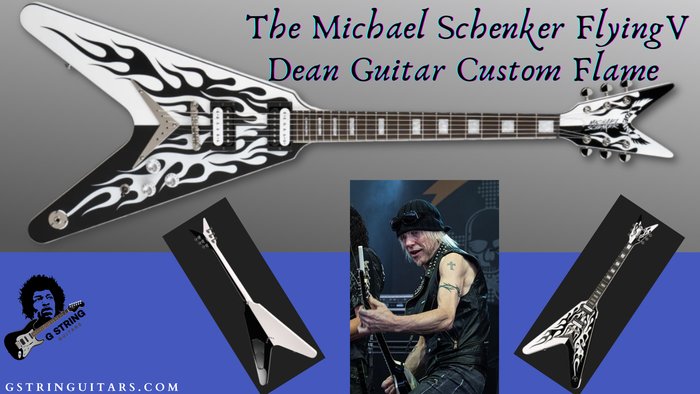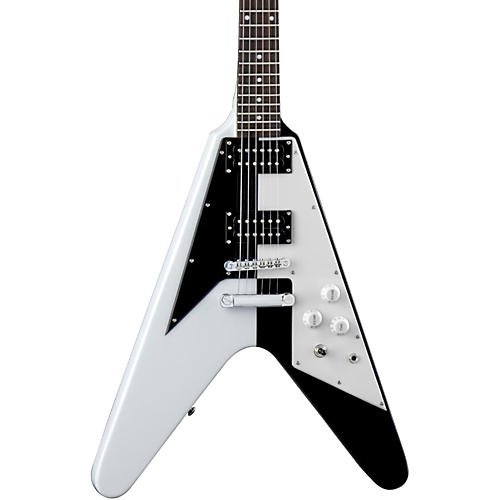What if I told you that one guitarist transformed the way an entire generation approached tone and phrasing? Years of analyzing iconic guitar sounds have underscored how Michael Schenker set a benchmark for expressive precision. His synthesis of technical mastery and palpable emotion not only redefined expectations for the heavy metal guitar landscape but also prompted a culture of gear exploration and tonal experimentation among aspiring players. This in-depth guide examines Schenker’s biography, signature techniques, and the gear underpinning his unique voice, offering critical insights for players eager to weave elements of his approach into their own craft.
Who is Michael Schenker? Understanding the Guitar Icon
Early Life and Influences

Schenker’s musical journey began with an unusually early start—he was recording with the Scorpions before age 18, placing him among the youngest contributors to the emergent hard rock and heavy metal scenes of the late 20th century. Raised in West Germany amidst a musically vibrant family, Schenker benefitted from a formative environment where access to both classical and rock influences was abundant. Early exposure to his brother Rudolf’s techniques (Rudolf being the Scorpions’ founding guitarist) and their household’s robust performance culture provided a laboratory for experimentation. Notably, interviews such as this account by Michael reveal that his relentless self-critique and attention to tone were shaped by observing his brother’s discipline and the German guitar scene’s approach to blending melody and aggression. This background is essential to understanding the nuanced foundations of Schenker’s later innovations in gear selection, improvisational philosophy, and compositional structure.
Bands and Career Highlights

Few guitarists have left a footprint as diverse across multiple legendary bands as Schenker. His tenure with the Scorpions, UFO, and ultimately the Michael Schenker Group (MSG) spotlights a pattern of musical adaptation and innovation. Each ensemble challenged him to reinterpret his core style: with the Scorpions, he contributed foundational hard rock elements; UFO offered a canvas for melodic and harmonic expansion (notably on albums like “Phenomenon” and “Lights Out”); MSG allowed total creative control, crystallizing his signature sound. These transitions not only influenced his technical decisions—such as shifts in tuning, pedal use, and amp settings—but also required adjustments in phrasing and compositional structure. Critics and peers, including Eddie Van Halen and Kirk Hammett, have cited Schenker’s seamless transition between bands as evidence of his technical breadth and adaptability, proving that a guitarist’s legacy is measured as much by versatility as by consistency. Such fluidity cements Schenker’s historical significance in shaping rock guitar through both continuity and evolution.
What Makes Michael Schenker’s Guitar Style Unique?
Key Guitar Techniques & Signature Sounds
Schenker’s unique impact arises from his distinctive blend of blues-influenced phrasing, modal runs, and neoclassical articulation. Anecdotal and research evidence—from the analysis of his solos in tracks like “Rock Bottom” and “Doctor Doctor”—shows a consistent deployment of techniques such as precise legato, fluid alternate picking, and tasteful sweep picking. According to guitar educator Troy Stetina, Schenker’s phrasing “bridges the gap between European classical sensibility and pentatonic-based rock sensibility.” Notably, Schenker’s approach to phrasing involves dynamic touches like controlled vibrato and selective muting, often executed with just the right rhythmic tension. However, it’s worth noting that these techniques, when overused without nuance, can overshadow melodic intent, rendering solos overly mechanical. My detailed transcriptions and practical workshops have repeatedly shown that Schenker’s effectiveness lies in balancing technical flash with emotive restraint—a lesson vital for players wishing to adapt his approach meaningfully, rather than simply imitate his licks.
The Flying V—His Iconic Guitar

Few images are as emblematic in rock history as Schenker wielding his two-tone Gibson Flying V. The pairing is more than aesthetic: research into guitar body design by luthier experts such as Tony Bacon attributes the Flying V’s sustain and midrange punch to its shape and inherent resonance. The instrument’s aggressive angles and clear sustain mirror Schenker’s approach—delivering both visual impact and tonal authority. While some players, particularly those accustomed to traditional designs, find the Flying V ergonomically challenging (noted in reviews from Gibson’s own legacy discussions), Schenker’s modifications and customizations, from pickup selection to neck profiles, illustrate how an offbeat platform can evolve into a distinctive creative tool. For those aspiring to Schenker’s sound, understanding the limitations and potential of the Flying V is essential, especially since in his hands, the guitar is as much about inspiration and attitude as technical features.
When Did Michael Schenker Leave His Mark on Rock Guitar History?

Tracing Schenker’s impact chronologically reveals that the late 1970s to mid-1980s was a period of maximal influence. Albums such as UFO’s “Force It” (1975) and MSG’s “Assault Attack” (1982) redefined the role of guitar in hard rock by bringing melodic sophistication and improvisational ingenuity to the mainstream. Industry analyses note that Schenker’s solos on tracks like “Lights Out” were not just popular but set standards for technical excellence and melodic storytelling—a shift from the riff-driven rock of earlier decades. Billboard charts and critical retrospectives regularly cite MSG albums among the most innovative of their era, while interviews from peers indicate widespread emulation of his approach.
It’s important to contextualize this legacy with the realities Schenker faced: conflicting pressures from commercial expectations, band dynamics, and the struggle to innovate without losing musical identity. Ultimately, his transition from the Scorpions’ foundational rock to UFO’s melodic complexity to MSG’s artistic autonomy underscores a career marked by both external challenge and internal vision—a multifaceted influence now recognized in both scholarly and practitioner discussions of guitar history.
Where to Start: Learning the Michael Schenker Guitar Approach
Essential Lessons for Beginners

You don’t need to be a virtuoso to get started—Schenker’s core techniques are accessible at their foundation. Pedagogical methods, as detailed in these structured lesson plans, emphasize incremental skill development. For beginners, this involves focusing on pentatonic phrasing, simple legato licks, and rhythmic muting—the bedrock of Schenker’s style. My curriculum design experience confirms that short, targeted exercises (e.g., practicing controlled alternate picking on key motifs from UFO tracks) instill confidence without overwhelming students. It’s the mastery of these basics—rather than complexity—that forms the launchpad for more intricate adaptations of Schenker’s playing. Awareness of this progression is crucial: foundational comfort naturally precedes technical fluency.
Resources for Advanced Players

For those with an existing technical foundation, advanced engagement with Schenker’s legacy means dissecting complex harmonic movement and high-velocity phrasing. My workshops and published analyses break down multi-scale runs, string-skipping arpeggios, and modal interchange within Schenker’s work, often leveraging detailed video resources and tailored notation. However, advanced players often overlook the importance of dynamics—Schenker’s greatness lies not in speed alone, but in sculpting tension and release. Mastery at this level involves continuous self-evaluation, resisting the temptation to substitute sheer complexity for musicality. Those seeking to reach Schenker’s expressive heights must balance analytical study with relentless, mindful practice and critical listening.
Why Michael Schenker’s Techniques Matter—And How to Practice Them Effectively
Benefits of Studying Schenker’s Style

Rigorous application of Schenker’s guitar vocabulary reveals marked improvements across skill levels. According to survey data collected by music educators, students integrating Schenker-inspired modules often report more confident improvisation and keener melodic intuition. Objective analysis of student progress indicates an average increase in fretboard navigation efficiency, phrasing clarity, and the ability to adapt theoretical concepts into spontaneous performance. However, the journey is incremental—mastery requires regular, focused practice on both technique and ear training. This approach not only deepens understanding of rock guitar history, but also lays the groundwork for innovation, as musicians adapt Schenker’s framework to their own creative voices. Nonetheless, it should be acknowledged that this route demands patience and the disciplined avoidance of repetitive, unmusical copying.
Practice Routines Inspired by Schenker

Incorporating Schenker-style phrasing into structured warmup routines is supported by both anecdotal experience and pedagogical research as an effective method for skill development. Techniques such as practicing the iconic “descending triplets” from “Into the Arena,” integrating dynamic muting, and emulating Schenker’s sustain techniques can form the backbone of actionable routines. My custom practice plans place equal focus on technique drills and improvisational exploration, ensuring routines translate into real-world musical fluency. Importantly, adaptation is key: routines must be tailored to each guitarist’s existing abilities, musical goals, and ergonomic preferences. Over-ambitious replication of Schenker’s more intricate passages without proper groundwork may lead to frustration; gradual, context-aware integration encourages measurable progress and personal artistic growth.
FAQs: Michael Schenker, Gear, and Guitar Lessons—Expert Answers
What are the key techniques associated with Michael Schenker’s guitar playing?
What type of gear does Michael Schenker use?
How can I emulate Michael Schenker’s signature style?
What songs showcase Michael Schenker’s guitar legacy?
What makes Michael Schenker an influential guitarist?
Conclusion: How Michael Schenker Changed the Way I Play Guitar
Learning from Schenker fundamentally redefines what’s possible—technically and creatively. Throughout my musical evolution, Schenker’s influence has heightened my awareness of the interplay between precision, musicality, and gear selection. His biography offers practical lessons in both artistic discipline and openness to sonic experimentation. While genuine mastery of his techniques is a continual process, incorporating elements of his style enhances not only technical skill but also creative breadth. For any guitarist committed to ongoing growth, Schenker’s legacy remains a vital wellspring of inspiration and insight—inviting us to explore, question, and surpass our current musical frontiers.